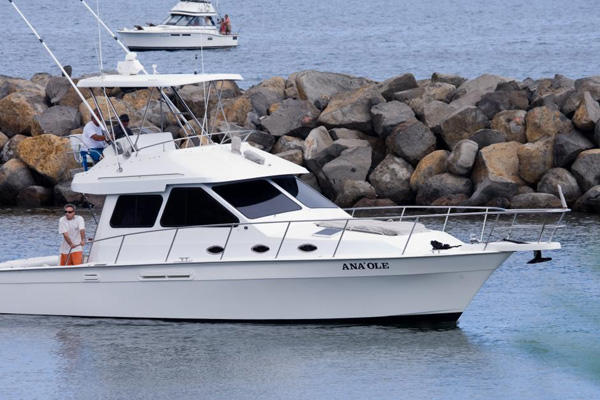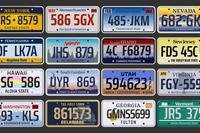PCS With Motorcycles Dirt Bikes and Boats
Motorcycle or Dirt Bike Shipments
1. Generally, motorcycles and or dirt bikes can be shipped either as a separate Privately Owned Vehicle (POV) shipment, or in your HHG shipment. However, some countries do not allow the importation of motorcycles and or dirt bikes. If shipped to a country which does not allow their importation, the entire HHG shipment and or motorcycle/dirt bike shipment may be held by the Host-Country Customs officials and may not be released until the unauthorized shipment has been corrected. This action may result in a monetary inconvenience on your part.
2. Contact your local TO for details based on Host-Country requirements to which being assigned to, or you may consult the Personal Property Consignment Instruction Guide (PPCIG).
3. When shipping a motorcycle, the following outlines your responsibilities during the moving process:
- Fuel injected models must be drained of fuel. Carbureted models must be drained down to reserve, or as low as possible. This can be done by running the engine until empty and/or using a siphoning device.
- Make sure that tires are properly inflated, and vehicle is free of fluid leaks. Oil, transmission and fuel leaks are the usual culprits that must be repaired prior to shipment.
- Disconnect battery and tape ends with electrical tape to prevent sparking.
- Empty saddlebags and ensure you remove all belongings. Any paperwork, keys, boxes, or spare parts need to be shipped separately. Saddlebags and windshields can stay on the motorcycle and helmets may be shipped as long as they are securely strapped to the motorcycle. NOTE: Ensure inventory reflects when helmet is attached to the motorcycle.
- Ensure motorcycle is unlocked so the driver can roll onto the truck and onto the skid.
- If equipped with a full style touring windshield, it is recommended that it be removed and shipped separately (crated if necessary).
Boats WARNING! Boat shipment and storage expenses are partially reimbursed by the Government and the member bears financial responsibility for any out-of-pocket expenses not paid by the Government.
1. Shipping Your Boat:
- The typical member is not well informed on the movement of boats in Government shipments. The JFTR authorizes movement of a boat, up to a cost not to exceed the amount to move the same weight of HHG. This sounds quite simple enough; however, most boats move under a One-Time-Only (OTO) rate at commercial rates.
- These rates usually exceed the rate to move a like weight of HHG. When this happens, excess cost is incurred. Please review the following information before you arrange for shipment of your boat at Government expense.
- Consider a Personally Procured Move (PPM): If you are moving your boat within the CONUS or between the CONUS and Alaska, consider making a PPM (at least for the boat). You could receive an incentive of 95 percent of the Government Constructed Cost (GCC) to move the same property (up to the amount of weight remaining on your allowance), less actual expenses and applicable taxes. The incentive is based on actual weight moved, not to exceed your maximum weight allowance. This program allows you to move the boat at Government expense and possibly make money for doing it.
- Make your own arrangements: If you choose not to perform a PPM, consider making your own arrangements with a commercial boat hauler. You are authorized reimbursement, not to exceed the GCC to move your same weight of HHG. Contact your TO for guidance before making your own arrangements. In most cases, the member has either avoided or reduced excess cost by making personal arrangements.
As with PPM moves, you must have weight remaining on your allowance to receive reimbursement. Boats may be shipped within CONUS or overseas (subject to host country restrictions). The definition of boats includes, but is not limited to, canoes, skiffs, sailboats, light rowboats, kayaks and dinghies, or sculls. You must ensure the boat and motor are securely fastened/strapped to the trailer.
2. Shipping Your Boat Trailer:
- The trailer must have a valid license; however, if the origin state does not require a license; a transit permit at the member's expense is necessary for the tow-away TSP to transport the boat trailer. Below are trailer safety standards to note prior to the shipment of the boat trailer.
- The trailer must have working lights, wiring, and brakes (if so equipped).
- The trailer must be equipped with good tires and hubs that have been checked for adequate lubrication and good bearings.
- The trailer frame must not be bent, twisted, or broken.
3. Member's Responsibility:
- Ensure the boat is prepared for shipment to avoid additional charges.
- Pay all accessorial service charges, including special packing, crating and handling costs. This includes the difference between special boat rates and the Government cost to transport a like weight of HHG. Be aware these costs can be expensive.
- Remove pilferable items, clothing, televisions, skis, and similar items. Lower or remove all antennas, masts, fishing/trolling poles, and outriggers.
- Ensure the boat is ready for the TSP on the agreed upon pickup date. The TSP can charge you for attempted pickup cost.
4. Methods of Shipping Your Boat:
- Domestic:
- Any boat (e.g., personal watercraft, jet ski) less than 14 feet long without a trailer, and dinghies and sculls of any size may be shipped as HHG with your HHG shipment.
- Boats (e.g., personal watercraft, jet skis) 14 feet or longer, or less than 14 feet with a trailer, may be moved as a separate HHG shipment. Such moves are normally arranged by the TO.
- PPM includes hiring a commercial mover or sailing the boat yourself.
- International:
- Any boat (e.g., personal watercraft, jet ski) and/or trailer that fits into a standard overseas container and small boats such as canoes, kayaks and rowboats may be shipped with your HHG.
- Boats, personal watercraft etc., that do not fit into a standard overseas shipping container may be moved with the member's HHG but require separate rates to be solicited under the OTO program.
- PPM includes hiring a commercial mover or sailing the boat yourself.
- When your boat is your principal residence, you have two movement options:
- Within the CONUS and to or from Alaska you may sail it yourself and receive the actual transportation cost subject to the limitations in the JFTR Chapter 5, or the automobile mileage rate in the JFTR Chapter 2 for overland mileage for the official distance between the authorized points. NOTE: Your travel and transportation allowances may be limited.
- Let the Government arrange to move your boat. In this case the Government will pay up to what it would cost to ship the like weight of HHG up to your maximum HHG weight allowance. If you live on your boat and move it as a principal residence, you are not authorized a separate shipment of HHG. Movement of a boat as a principal residence is governed by the same rules and regulations as shipping a mobile home. The rule restricting shipment to any place outside the CONUS except Alaska is the same as that for a mobile home. Contact your local TO for additional information.
Protect your Property and Belongings
Private insurance is also a good way to protect your personal property and covers you in case of personal liability. Get free quotes.













